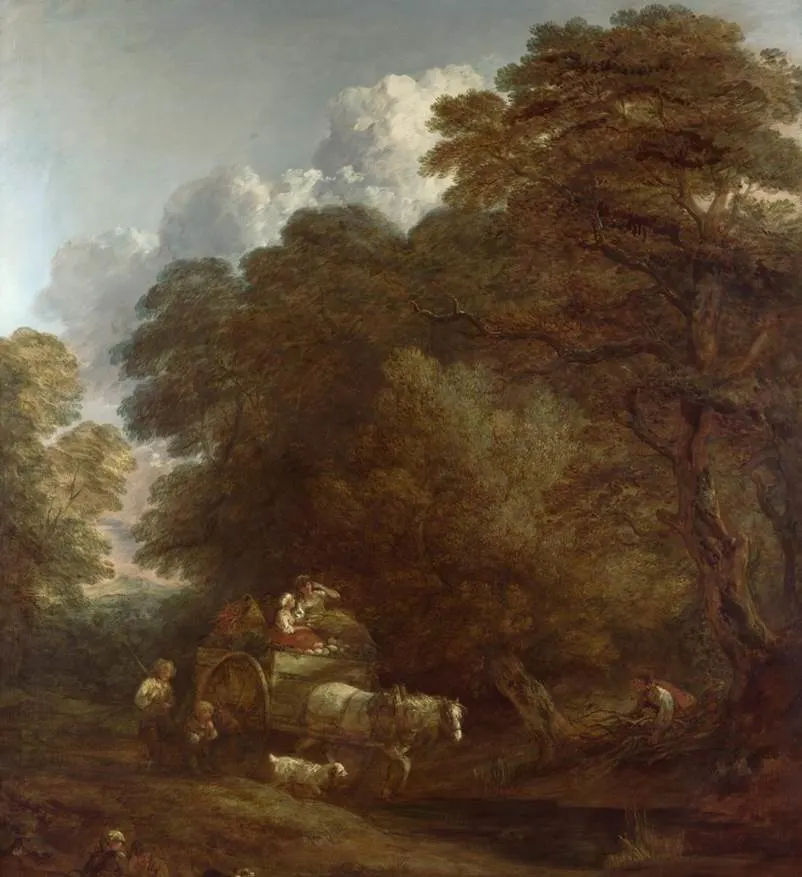One of the greatest Engish artists in history became famous because he painted marvelous portraits of upper-class individuals.
His true passion, however, was to spend time in nature and paint landscapes. Both types of paintings are featured in this remarkable list of masterpieces.
Thomas Gainsborough (1727-1788) lived in a time that Rococo masters painted frivolous works of art. His light palette and easy brushstrokes are a reflection of this era.
He was a pioneering landscape artist and a founding member of the Royal Academy in London. His membership, however, was overshadowed by a dispute with his rival Sir Joshua Reynolds (1723-1792).
Let’s take a closer look at some of the most famous Thomas Gainsborough paintings so you can get a clear view of the talent of this intriguing artist.
1. The Blue Boy
- Date created: 1770
- Dimensions: 177.8 × 112.1 centimeters (70 × 44.1 inches)
- Location: National Gallery, London, United Kingdom
The Blue Boy is without a doubt the best-known of all Thomas Gainsborough paintings. That’s mainly because this full-length portrait of a young boy wearing a blue costume has been featured in a wide variety of media since its creation.
Although we can’t know for sure who the sitter was, some art historians have suggested it was likely Gainsborough Dupont (1754–1797), the artist’s nephew. The painting is owned by The Huntington in San Marino, California, but is on display at the National Gallery in London.

2. Mr. and Mrs. Andrews
- Date created: 1750
- Dimensions: 69.8 × 119.4 centimeters (27.5 × 47 inches)
- Location: National Gallery, London, United Kingdom
Mr. and Mrs. Andrews is one of Gainsborough’s paintings that integrate both the artist’s ability to paint portraits and landscapes. It was painted while the artist was living in his native Suffolk and depicts a recently married couple named Robert and Frances Andrews.
The other remarkable fact about this painting is that it didn’t leave the collection of the family of the sitters until the year 1960. The painting was even completely unknown until it first appeared at an exhibition in Ipswich in 1927.

3. The Honourable Mrs. Graham
- Date created: 1777
- Dimensions: 237 × 154 centimeters (93 × 61 inches)
- Location: Scottish National Gallery, Edinburgh, Scotland

The Honourable Mrs. Graham is also known as the “Portrait of Mrs. Mary Graham.” The painting was produced shortly after she had married Thomas Graham, the future Lord Lynedoch, and was bequeathed by the heirs of Thomas Graham to the museum in Edinburgh in 1859.
The painting has a very sad backstory because Mary Graham fell ill with Tuberculosis shortly after this painting was completed. She never recovered and although the family moved to southern France to seek a warmer climate, she passed away at the age of 35. Thomas Graham lived 50 more years and never remarried, nor did he look at his wife’s portrait.
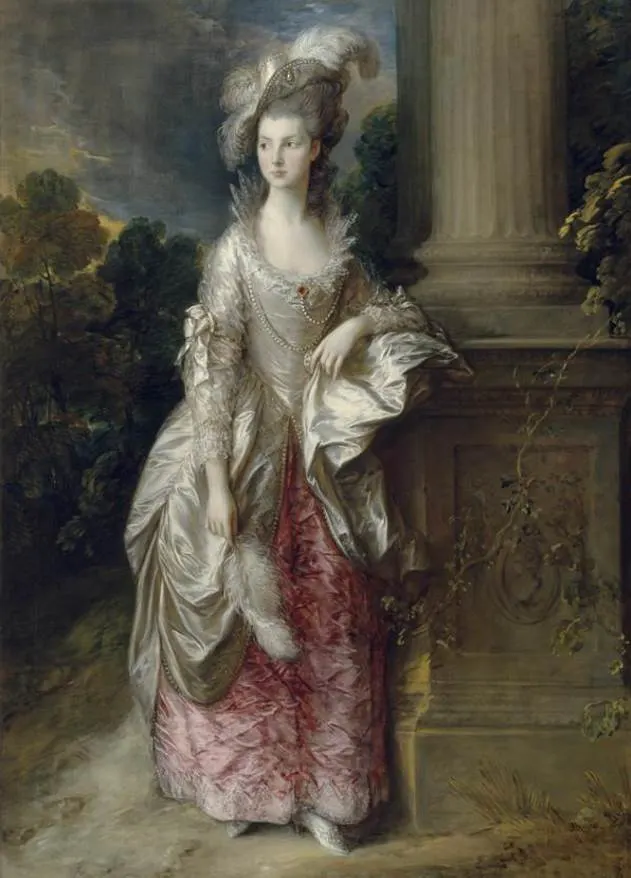
4. Woman in Blue
- Date created: 1770-1780
- Dimensions: 76.5 × 63.5 centimeters (30.1 × 25 inches)
- Location: Hermitage Museum, Saint Petersburg, Russia
Woman in Blue is another portrait of a woman whose identity remains a mystery until today. This doesn’t mean that there haven’t been suggestions made as some art historians claim she is the Duchess of Beaufort, the daughter of an admiral in the Royal Navy named Edward Boscawen.
The painting was donated to the Hermitage Museum in Saint Petersburg in the year 1916 by a Russian art collector. This means that it’s the only of all Thomas Gainsborough paintings that can be admired in Russia today.
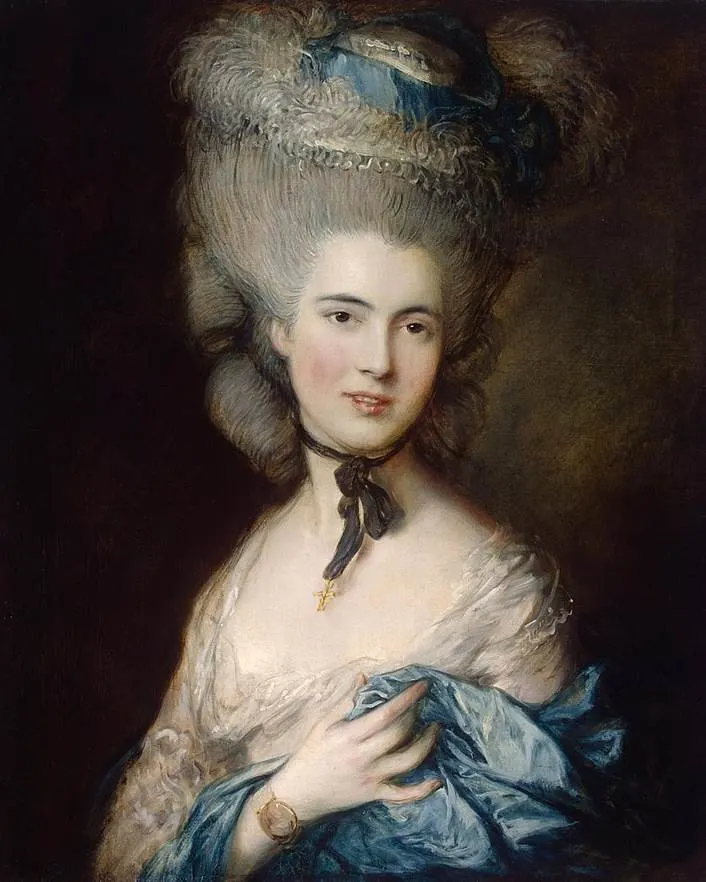
5. The Painter’s Daughters Chasing a Butterfly
- Date created: 1756
- Dimensions: 113.5 × 105 centimeters (44.7 × 41 inches)
- Location: National Gallery, London, United Kingdom
The Painter’s Daughters Chasing a Butterfly is an accurate description of what this painting depicts. It features the two lovely young daughters of Gainsborough named Mary (1750-1826) and Margaret (1751-1820), who were beloved by their father.
The two girls often served as models in his paintings and this particular work has been referred to as a turning point in his career. Before this work was completed he painted mainly in a Realistic style influenced by Dutch genre paintings, while this work already shows glimpses of the exuberant style he used later on.

6. The Artist with his Wife and Daughter
- Date created: 1748
- Dimensions: 92.1 × 70.5 centimeters (36.25 x 27.75 inches)
- Location: National Gallery, London, United Kingdom
Thomas Gainsborough painted several self-portraits and this work titled “The Artist with his Wife and Daughter” is the first one he ever produced. Better yet, it’s also the only self-portrait in which he is featured together with his family.
It’s another tragic painting because it depicts the couple’s first daughter Mary who passed away in the year 1748 as an infant. Because of this notion, likely, Gainsborough was not yet 21 years of age when he completed this work, while his wife Margaret was one year younger.
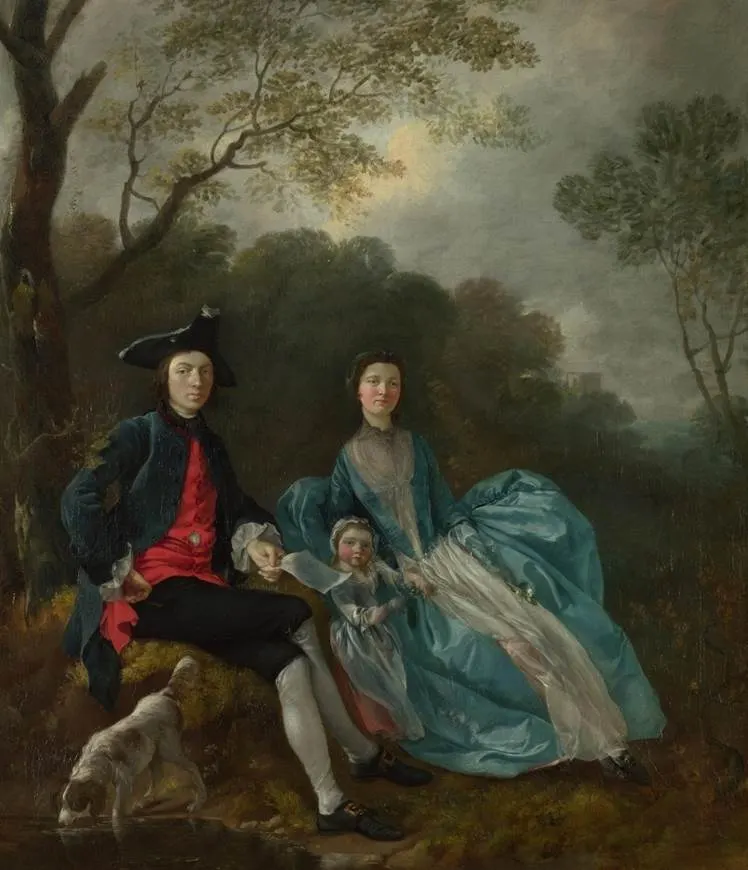
7. Elizabeth and Mary Linley
- Date created: 1772
- Dimensions: 199 x 153.5 centimeters (78.34 x 60.43 inches)
- Location: Dulwich Picture Gallery, London, United Kingdom
Elizabeth and Mary Linley is the only painting ever created that features both sisters together. Elizabeth Ann Linley (1754-1792) was the model of many paintings by Gainsborough because he was a family friend of the popular 18th-century singer, poet, and writer.
The artist met the Linley family when he moved to Bath, the largest city in the county of Somerset where Elizabeth was born. She already made a name for herself at the time this painting was completed and Gainsborough moved to London 2 years later in 1774.
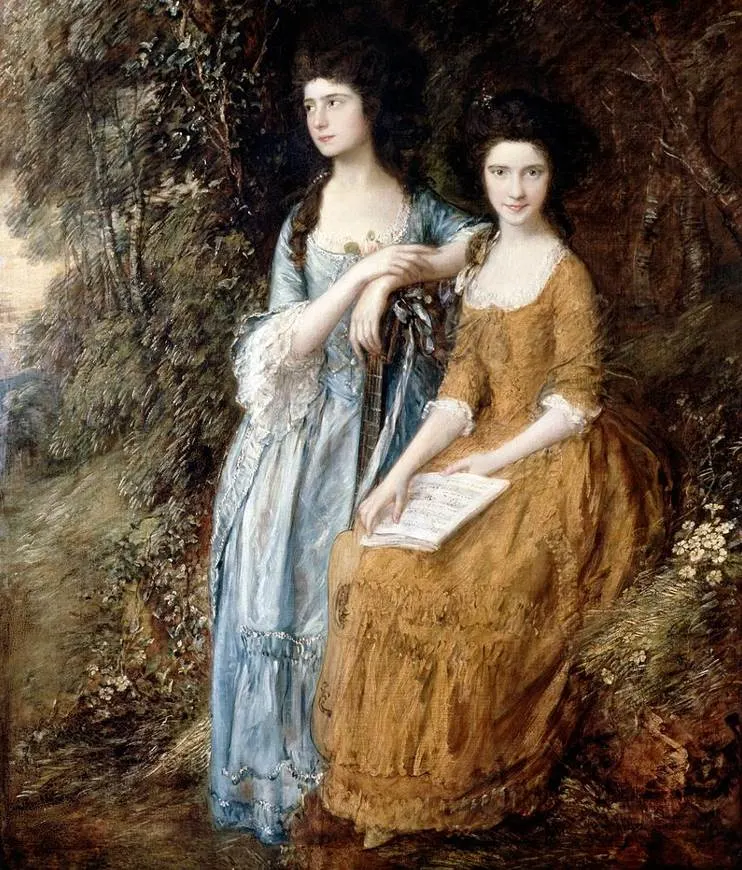
8. Mr. and Mrs. William Hallett
- Date created: 1785
- Dimensions: 236.2 × 179.1 centimeters (93 × 70.5 inches)
- Location: National Gallery, London, United Kingdom
Mr. and Mrs. William Hallett is a double portrait of a young couple named William Hallett (1764–1842) and Elizabeth Stephen (1763/4-1833). It was painted when the couple was just 21 years of age and shortly before they married in the church of St Lawrence in Little Stanmore, Harrow, London.
This painting is the epitome of the light brushstrokes that the artist used during the final years of his career. The couple may be wearing the clothes they wore during their marriage. The alternative name of the painting describes the depicted activity which is “The Morning Walk.”
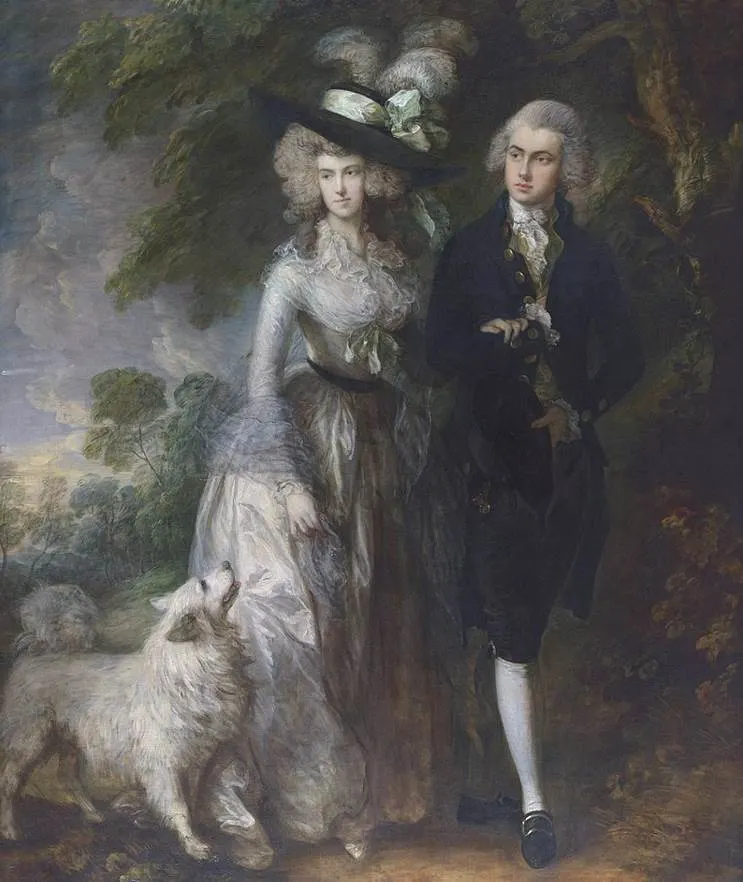
9. Cornard Wood, near Sudbury, Suffolk
- Date created: 1748
- Dimensions: 122 × 155 centimeters (48 × 61 inches)
- Location: National Gallery, London, United Kingdom
Thomas Gainsborough got tired of painting portraits of rich individuals and only reluctantly accepted commissions during the final decade of his career. He preferred to spend time on his passion which was going out in nature and paint landscape of the beautiful English landscape.
This hobby was reminiscent of his early years living in Suffolk in which he completed this work called “Cornard Wood, near Sudbury, Suffolk.” Although the title describes the location of the painting, it’s clear whether the church in the background is the one at Great Cornard, Suffolk.
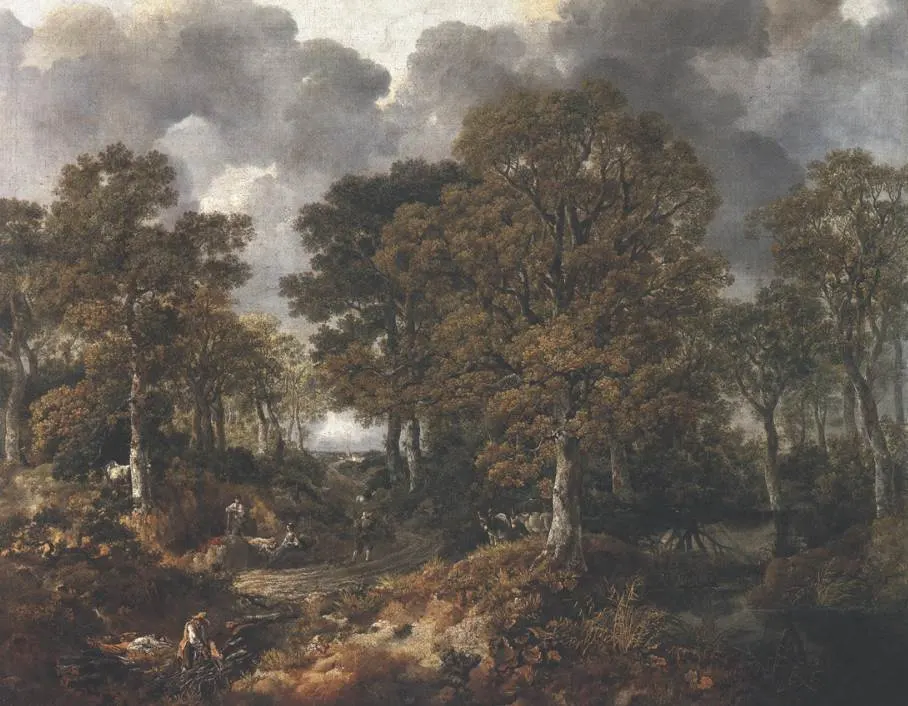
10. The Market Cart
- Date created: 1786
- Dimensions: 184 × 153 centimeters (72 × 60 inches)
- Location: National Gallery, London, United Kingdom
The Market Cart was painted at a time when Gainsborough didn’t have to accept commissions for portraits to provide for his family. He was able to fully focus on doing what he like best, which was to paint landscapes.
The artist was proud of this work because he presented it as his house in Pall Mall, London, in 1786. It depicts a horse-drawn cart driven by two girls in a wooded area. The figure on the right is a man gathering wood but this wasn’t added to the painting until 1787.
